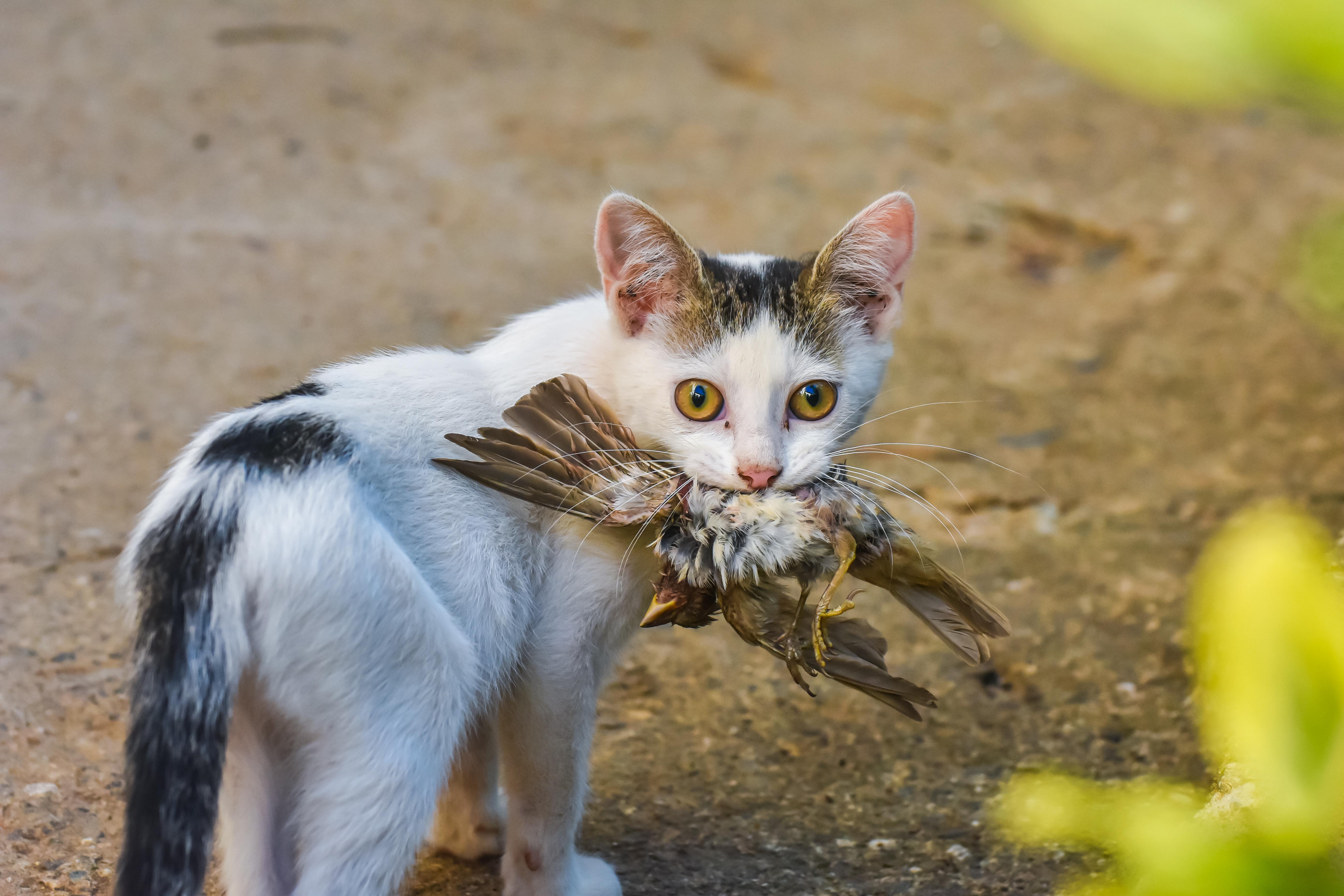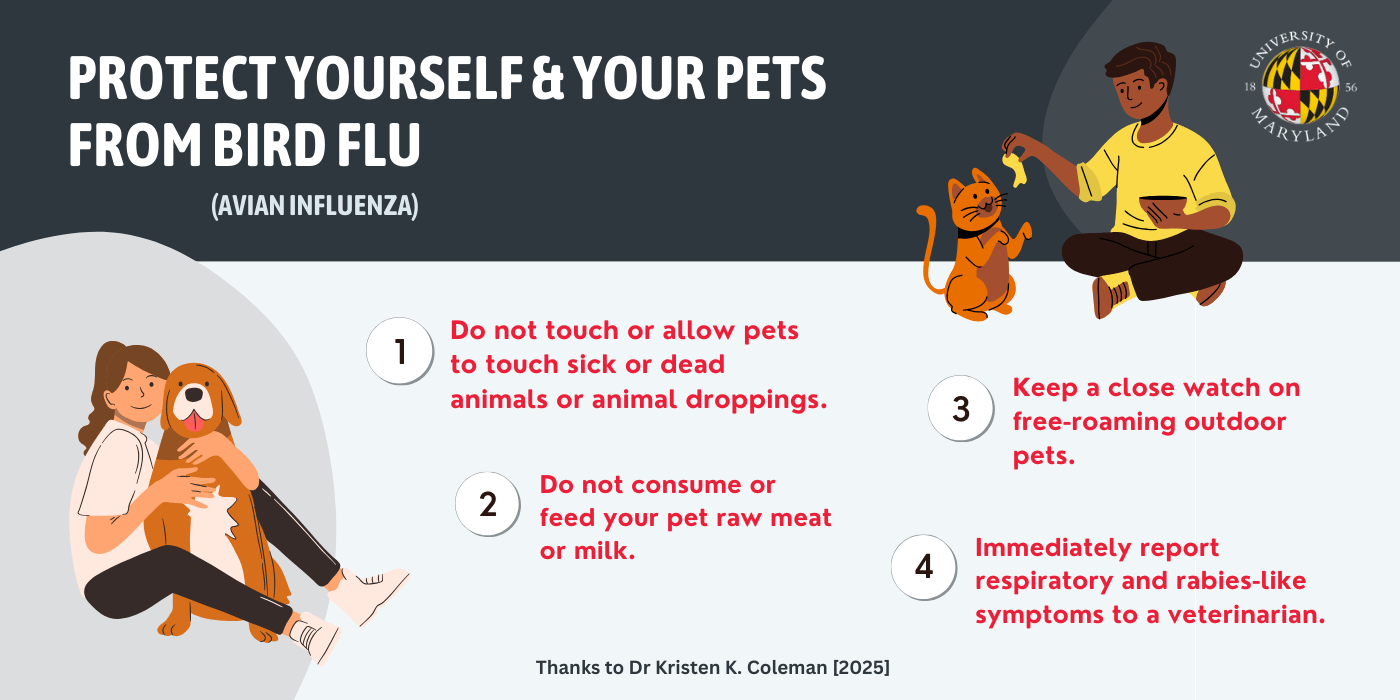
COLLEGE PARK, Md. — It’s spring, the birds are migrating and bird flu (H5N1) is rapidly evolving into the possibility of a human pandemic. On May 7, researchers from the University of Maryland School of Public Health published a major study in Open Forum Infectious Diseases documenting research on bird flu in cats and calling for urgent surveillance of cats to help avoid human-to-human transmission.
“The virus has evolved, and the way that it jumps between species – from birds to cats, and now between cows and cats, cats and humans – is very concerning. As summer approaches, we are anticipating cases on farms and in the wild to rise again,” says lead and senior author Dr. Kristen Coleman, assistant professor in UMD School of Public Health’s Department of Global, Environmental and Occupational Health and affiliate professor in UMD’s Department of Veterinary Medicine.
“Bird flu is very deadly to cats, and we urgently need to figure out how widespread the virus is in cat populations to better assess spillover risk to humans,” she said. “We want to help protect both people and pets.”
Spanning data from 2004 through 2024, the global review of research papers found 607 bird flu infections in cats, including 302 associated deaths, from 18 countries and in 12 types of cat species, from pet cats to tigers. Cats are not actively monitored for bird flu and testing is usually performed postmortem, if at all. Due to the lack of surveillance, the numbers are likely a significant underestimate, Coleman said.
Yet the ways cats are getting bird flu are multiplying. The study shows cats contract bird flu directly by eating infected birds or contaminated raw chicken feed, and indirectly through other mammals – for example, farm cats fed raw milk from infected cows, pet cats to other pet cats, tigers to other tigers.
Infected cats often suffer from acute encephalitis (brain swelling) and other severe symptoms, which are mistaken for rabies, according to the study. The most deadly strain of bird flu is highly infectious and makes up the majority of cases in domestic cats, with a current 90% case fatality rate. In humans, bird flu is slightly less deadly, but still has killed around half of the 950 people infected with it globally. Between April 28, 2022 (when cumulative data on humans in the U.S. started being collected) and now, the U.S. has seen 70 confirmed cases and one death.
Coleman and her team are particularly concerned about the potential for bird flu getting into animal shelters which could result in large outbreaks potentially involving humans – similar or worse to what happened in New York City with a different strain of bird flu in 2016.
There are no reported cases of human to human transmission of bird flu, but researchers are concerned that as the virus spreads and evolves, it could become easily transmissible through the air.
“Our future research will involve studies to determine the prevalence of HPAI and other influenza viruses in high-risk cat populations such as dairy barn cats. Our research seeks to protect people and our vulnerable pet cats from the emerging threat of H5N1,” said Ian Gill Bemis, coauthor of the paper and doctoral student studying bird flu in cats.
To request an interview with Dr. Coleman, please contact sph-comm@umd.edu.
Funding for this project was provided by the University of Maryland Baltimore, Institute for Clinical & Translational Research (ICTR) and the University of Maryland Strategic Partnership: MPowering the State(MPower) to KKC, as well as discretionary funding from the University of Maryland School of Public Health, Department of Global, Environmental, and Occupational Health to KKC.
***
Established in 2007 at one of the nation’s leading research institutions, the University of Maryland School of Public Health has more than 30 academic programs — including bachelor’s, master’s, doctoral and certificate programs, in-person and online options – and specialties from global health to family health, kinesiology to epidemiology to health policy, and so much more. At the UMD School of Public Health, we cultivate an educational experience that prepares students to make a positive difference in the world.
